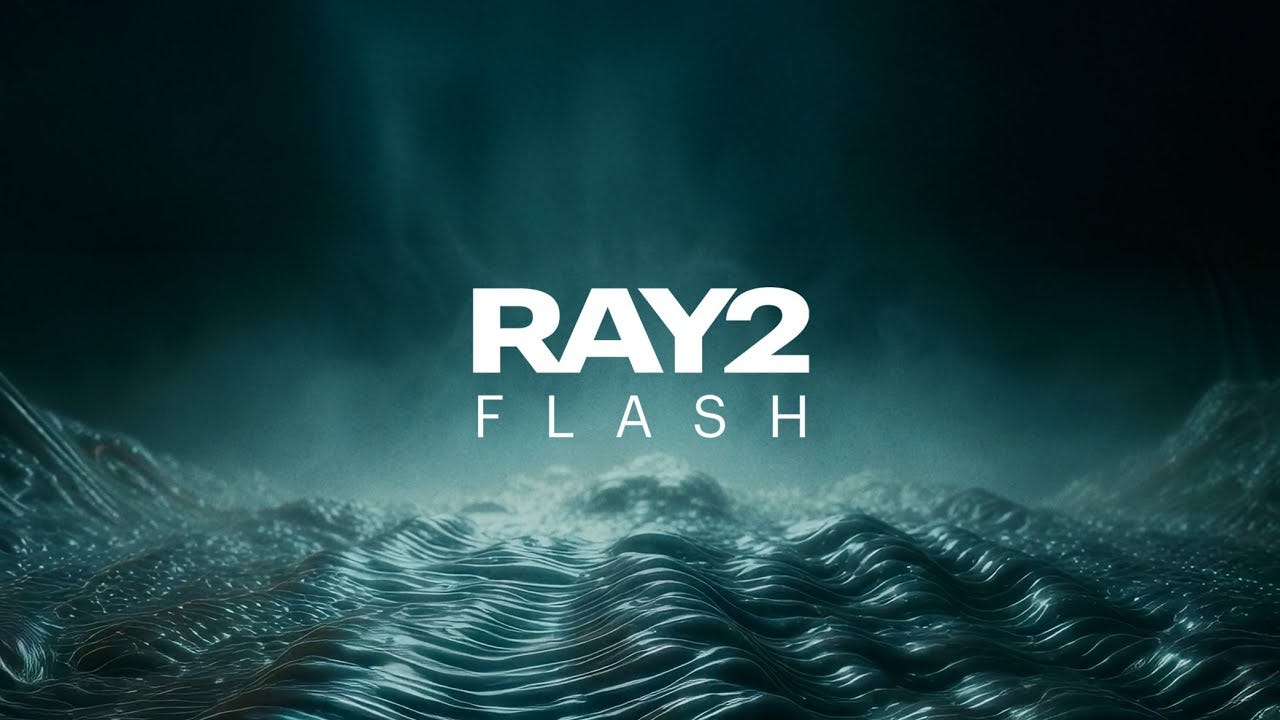Luma’s Ray2 Flash: Generative Video at Lightning Speed
Luma AI's Ray2 Flash enables rapid creation of high-quality clips from text prompts.
Generative AI images have stolen the spotlight in recent weeks/months – but videos are quickly catching up. Luma AI’s new Ray2 Flash is the latest leap forward, promising to turn simple text prompts into vivid short videos faster and more affordably than ever. Building on Luma’s original Ray2 model, Ray2 Flash delivers the same cutting-edge capabilities at triple the speed and one-third the cost. The result is a generative model that puts high-quality AI video creation within reach for everyday creators.
For more, Luma’s homepage can be found here.
From Ray2 to “Flash” – What’s New?
Ray2 itself debuted as a large-scale text-to-video model that produces realistic visuals with natural, coherent motion. Trained on a new multimodal architecture with 10× more compute than its predecessor, Ray2 set a new bar for AI video with fast motion, ultra-realistic details, and logical sequences of events. In practical terms, this meant short clips (up to about 10 seconds) at resolutions up to 720p–1080p that looked far more “production-ready” than prior AI efforts. Luma even touts Ray2 as “the fastest, most efficient video generative model in the market.”.
Ray2 Flash is an accelerated version of that model. Luma calls Flash its “3× faster, 3× cheaper” update, bringing all of Ray2’s frontier features – text-to-video, image-to-video, even audio generation – to users with high quality but greatly reduced wait times. In fact, free-tier users can now experiment with Ray2’s generative video tools at just a third of the previous cost, making advanced AI video more accessible. Under the hood, Flash is optimized for speed and efficiency. A typical 5–10 second clip that might have taken close to a minute to render can now be ready in mere seconds.
Speed, Quality, and Creative Control
Ray2 Flash’s appeal can be summed up in three points:
Generation Speed: Rendering AI-driven video is now faster. Creators can get results in seconds, enabling a rapid trial-and-error workflow. This responsiveness is key for creative professionals on deadlines or anyone iterating on visual ideas quickly.
High Fidelity Visuals: Because Ray2 was trained directly on extensive video data (not just still images), it understands natural motion, lighting, and physics. The model produces clips with lifelike textures and fluid movement.
Creative Control Tools: Luma’s platform provides features to shape the generated videos. Users can supply start and end keyframes, guiding the scene’s opening and closing shots. They can also loop scenes or extend video length beyond the initial clip. This frame-by-frame control and the ability to orchestrate camera movements give creators a directing role in the AI generation process.
Standing Out in a Crowded AI Landscape
Text-to-video AI has become a hot frontier, with startups and tech giants racing to crack the code of believable AI-generated film. Runway’s Gen-4 and earlier models, for instance, have gained significant attention for bringing text-to-video to creators. Luma’s Ray2, however, quickly emerged as a competitor when it launched, thanks to its focus on photorealism and motion.
With the Flash upgrade, Luma solidifies their spot in speed and accessibility. It stands among the most advanced publicly available generative video models, delivering near film-quality clips in a fraction of the time it took just months ago.
By training on rich video, audio, and text data simultaneously, Luma’s approach leans into a multi-sensory learning (much “like the human brain”) that many others haven’t fully tapped. The result is a model that doesn’t just generate images that move, but rather genuine mini-films with a sense of continuity and camera dynamics.
A New Playground for Creators
For filmmakers, designers, and storytellers, tools like Ray2 Flash hint at a future where imagination is the only limit. Need a quick sci-fi cityscape flyover or an artful dance performance on an iceberg for a pitch? Simply describe it, and let the AI do the first draft.
By dramatically lowering the cost and time of producing video snippets, Ray2 Flash could change creative workflows. Storyboarding and prototyping can happen in motion instead of static sketches. Indie game designers or VR artists might generate dynamic backgrounds on the fly. Educators and marketers could spin up bespoke visual content without contracting a whole production team.
By giving new creators access to sophisticated tools at a fraction of the traditional cost, platforms like Ray2 Flash allow fresh talent to compete on more equal footing. They can focus on refining their creative vision rather than struggling to secure big production budgets or extensive technical teams. This shift in accessibility means newcomers can enter the industry with impactful work right from the start, helping them stand out in a crowded market and attract attention based on their ideas rather than their resources.
There are broader implications as well. As generative video quality inches closer to Hollywood-level production, we’re forced to rethink the line between real and synthetic media. Ray2 Flash moves that line a few steps further, making high-quality video generation nearly instantaneous.
Ray2 Flash offers a glimpse of generative media’s next chapter. Today it’s 10-second clips; tomorrow it could be full scenes or interactive content generated on demand. For now, creative professionals can experiment with this “dream machine” to see just how far they can push visual storytelling with an AI co-director. With speed and quality getting dramatically better, generative video is stepping out of the lab and into the hands of more creators.
Keep a lookout for the next edition of AI Uncovered!
Follow our social channels for more AI-related content: LinkedIn; Twitter (X); Bluesky; Threads; and Instagram.


